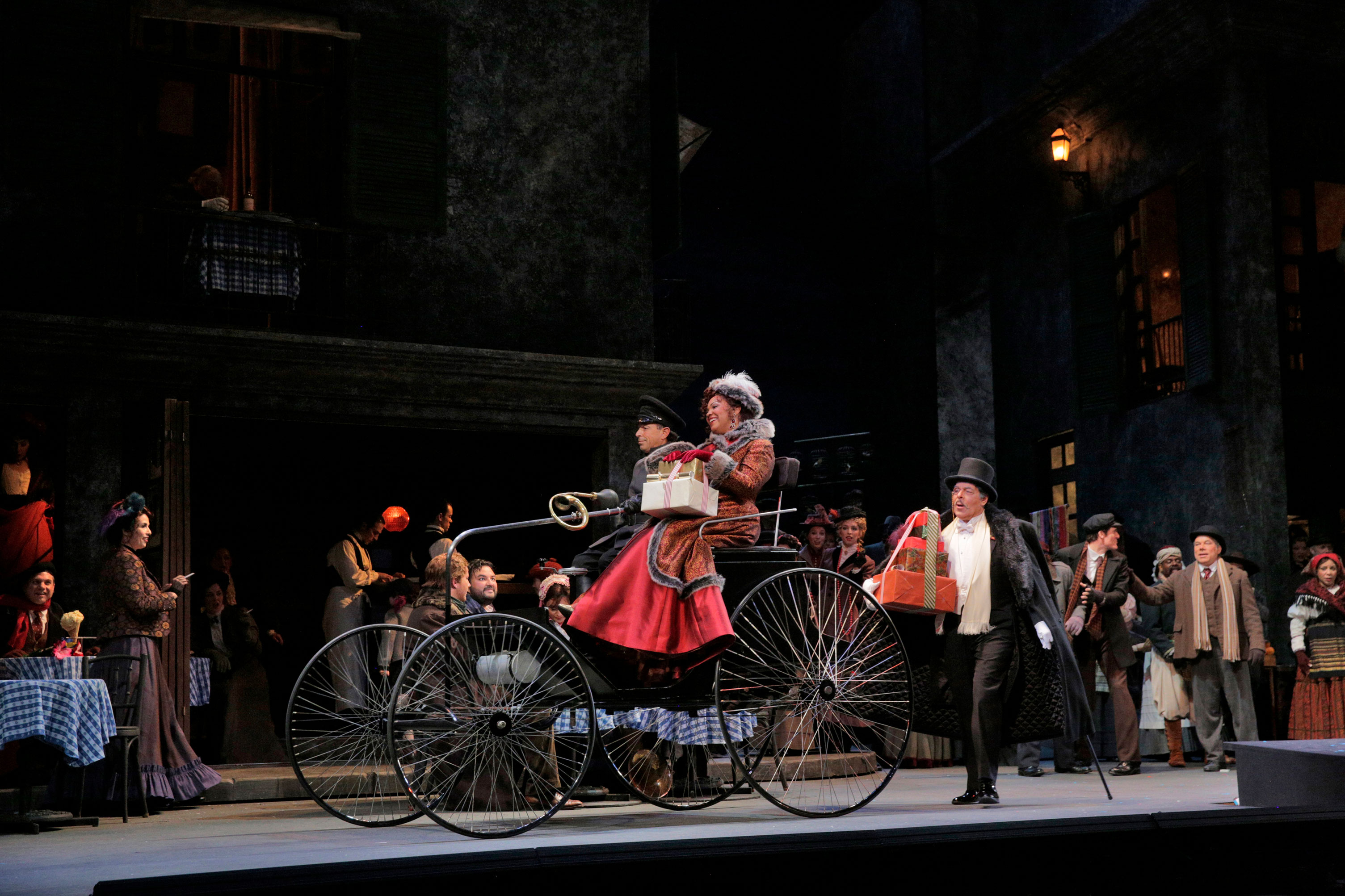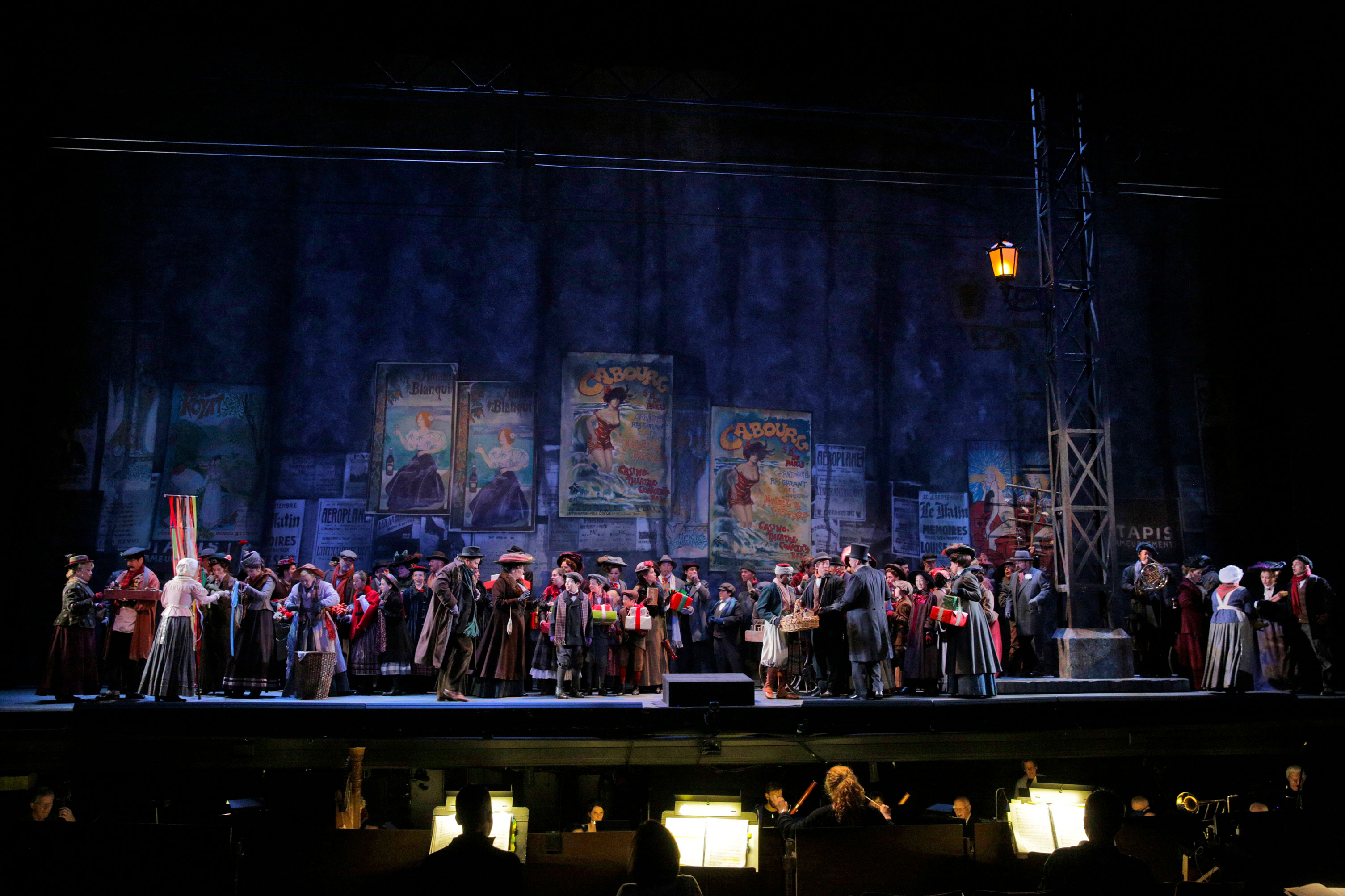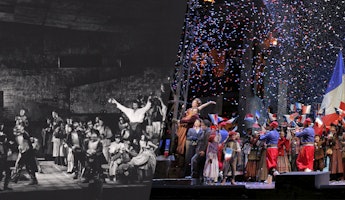Blog
October 27, 2025
From Page to Stage: "La Bohème"
In 19th-century Paris, the Latin Quarter throbbed with the heartbeat of youth. Its narrow streets shimmered under the new gas-powered street lights, its cafés filled with the chatter of dreamers who paid for their coffee with the last of their coins. Here gathered the painters, poets, and philosophers of a restless generation, the ones who lived for art and often died for it, known as bohemians.
Among them wandered Henri Murger, a clerk who should have spent his days buried in law books but instead found himself drawn toward the flickering warmth of the Quarter. He would skip work to linger among booksellers and musicians, feeding himself on cheap café meals and the promise of becoming something more than another name forgotten in an office ledger.
It was in these streets that Murger began to write. Between 1847 and 1849, his sketches of bohemian life appeared in the magazine Le Corsaire, and later as a collection titled Scènes de la vie de bohème in 1851. His characters lived on love and laughter, freezing in their attic rooms yet aflame with creation. Rudolphe, the writer, mirrored Murger himself; Mimi, delicate and doomed, was drawn from his mistress, Lucile Louvet.
The book jettisoned traditional plot structure in favor of vignettes, fragments of tenderness and despair that struck a chord with its readers. It romanticized the struggle of those who dared to live for beauty but didn't shy away from the harsh realities that lifestyle had in store.

The success of Murger’s tales drew the attention of playwright Théodore Barrière, who helped shape them into a play in 1849. The stage version gave Murger’s scattered stories a dramatic spine with Rudolphe and Mimi as the emotional core, their love as fragile as the frost on the garret window. The play charmed Paris for decades, a bittersweet celebration of the bohemian spirit, laughter echoing through the ache of loss.
Half a century later, those same echoes reached the ears of two Italian composers: Ruggero Leoncavallo and Giacomo Puccini. Both saw in Murger’s work the stuff of opera—passion, poverty, death, and transcendence. But when Puccini announced his own La Bohème, Leoncavallo, who had already been working on his version, cried theft. Leoncavallo turned to the papers, claiming he had shown Puccini his libretto for La Bohème, trying to start a feud with the then up-and-coming composer.
Puccini’s reply was simple, and devastatingly confident:
“Let him compose, I will compose—the public will decide.”
Puccini’s La Bohème would take shape through the delicate craftsmanship of librettists Luigi Illica and Giuseppe Giacosa. While the play had given Murger's stories a structure, it was also still under copyright, meaning the librettists had to create new ways to connect the vignetted stories. This especially can be seen in acts two and three, which are largely made up of original material that aimed to keep Murger’s spirit intact.
Rudolphe became Rodolfo, a poet whose attic flickers with both candlelight and dreams. Mimi kept her tenderness but gained new fragility thanks to her taking aspects of the cut character Francine.

When La Bohème premiered on February 1, 1896, in Turin, the audience was uncertain, and critics were divided. Yet Puccini’s score, shimmering with youth and longing, spoke to audiences. Within a year, the opera had conquered Italy. By 1898, the story had returned home to Paris, where the bohemians had once lived and starved and loved for real.
Leoncavallo’s version followed soon after but was swallowed in the shadow of Puccini’s. The public had decided.
Since that night in Turin, La Bohème has become the heartbeat of the operatic world. It was the last opera performed at the Metropolitan Opera’s original house, and it was playing in Rome when news of Puccini’s death spread through the audience. To this day, it remains many listeners’ first taste of opera.
And in that music, in Rodolfo’s cry of “Mimi!” and the waltz that drifts like laughter from a distant café, you can still hear Murger’s candle burning and his pen scratching on paper. His little sketches of hunger and love were transformed by Puccini into something eternal: the sound of beauty surviving poverty, of art defying oblivion.
We may not condone skipping work to haunt Parisian cafés, but perhaps we owe a quiet thank you to the man who did. Because once upon a time, Henri Murger looked out over the rooftops of the Latin Quarter, at the artists burning their work to stay warm, at the writers running from a check they can’t afford to pay, at the philosophers who kept tossing ideas of life on their death bed, and saw not squalor but the shimmer of beauty that lays inside the human spirit.
To get tickets to see La Bohème click here.








/03-cosi/_dsc0996_pr.jpg?format=auto&fit=crop&w=345&h=200&auto=format)














